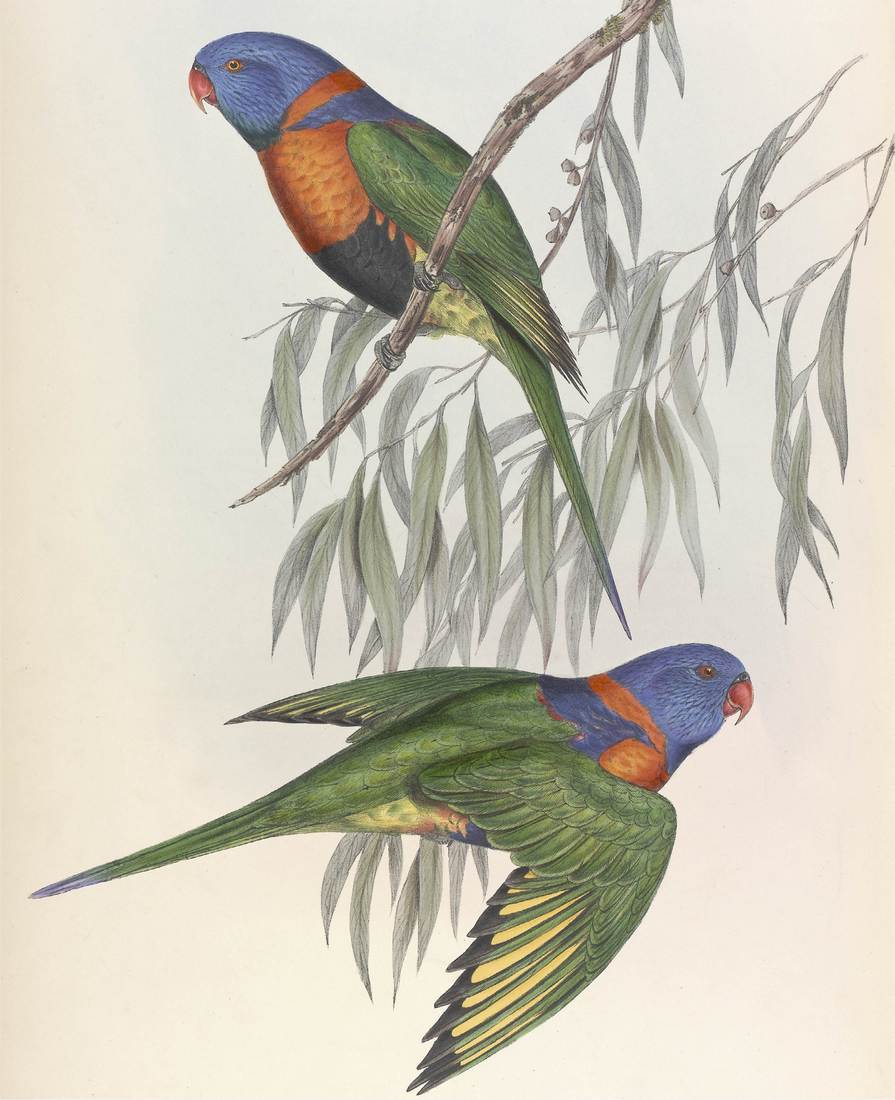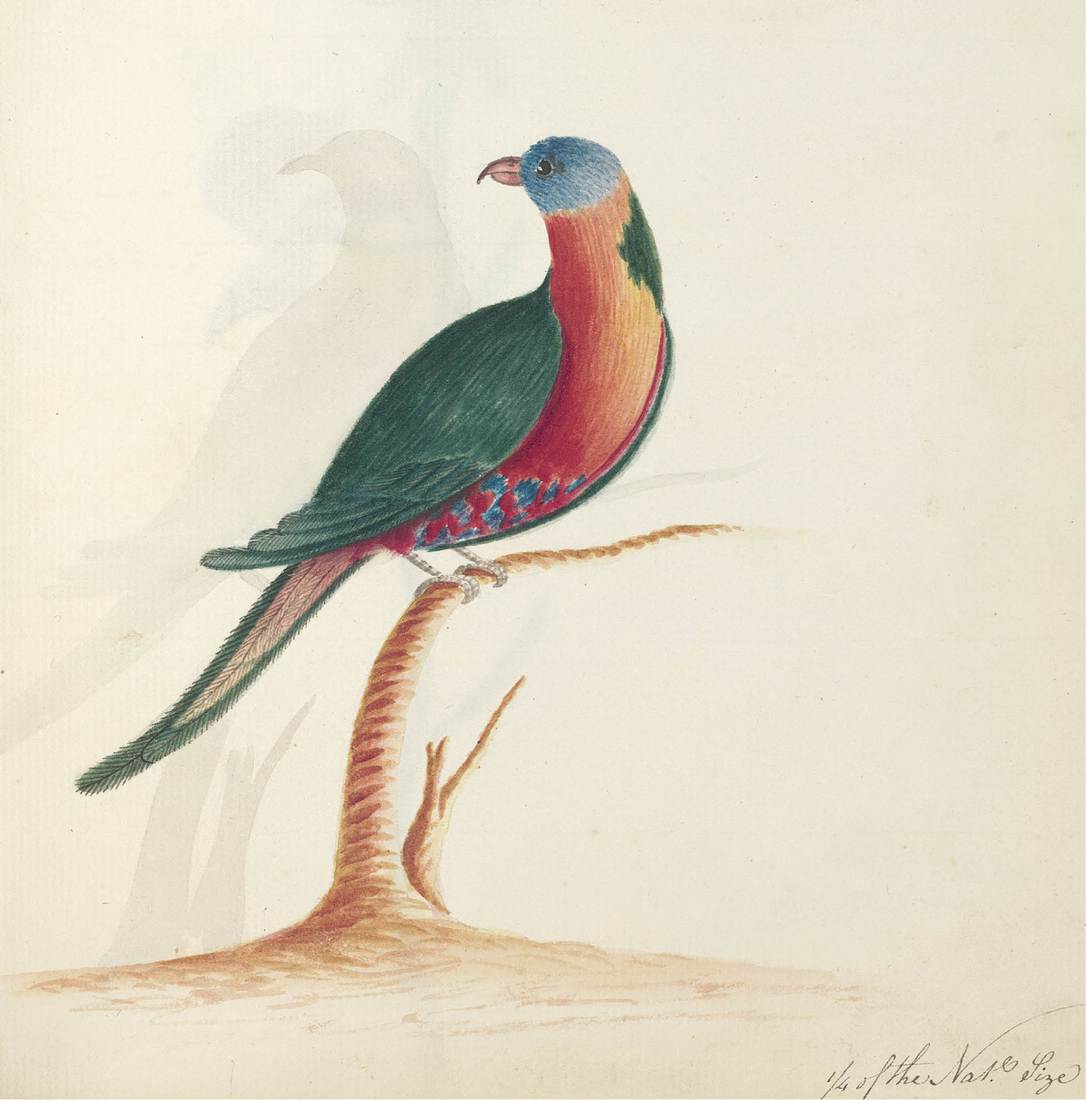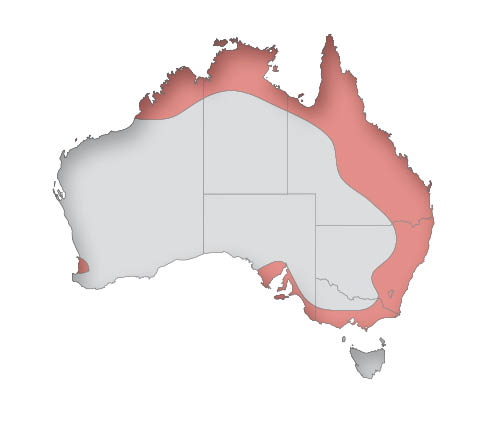Rainbow Lorikeet
Trichoglossus haematodus
Carl Linnaeus was the first to describe the species, in 1771 (from a specimen collected on Ambon in Indonesia).
Trichoglossus combines the Latin thrix (brush or hair) and glossa (tongue), referring to the lorikeet’s brush tongue; haematodus is based on the Greek word for blood-red, referring to the red-splashed breast.

John Gould (artist), Henry Constantine Richter (lithographer), Trichoglossus rubritorquis (Red-collared Lorikeet) 1848
(two adults; sexes similar)
Author’s note: The lorikeet’s brush tongue allows it to gather nectar efficiently.

Unknown artist c. 1795
Author’s note: At first European settlement, Rainbow Lorikeets were common around Port Jackson (Sydney), as they are today. With the large flocks, bright colours, cheerful chattering and boldness, the birds would have been known to many. According to George Caley, the species was called the Blue Mountain Parrot by the early settlers because the Aboriginal people, in order to sell the birds, brought them to Rose Hill (the early name for Parramatta), which is at the base of mountains. However, the species is not a mountain parrot.

John Hunter, Gorail between 1788 and 1790
Author’s note: Hunter noted the Aboriginal name ‘Gorail’ on several of his paintings of parrots (but not of cockatoos), which suggests that it was the local generic name for a parrot in the Port Jackson area. Naturalist and explorer George Caley, who lived in Parramatta for a decade from 1800, gave the Aboriginal name as ‘War’rin’, perhaps in reference only to the Rainbow Lorikeet.




